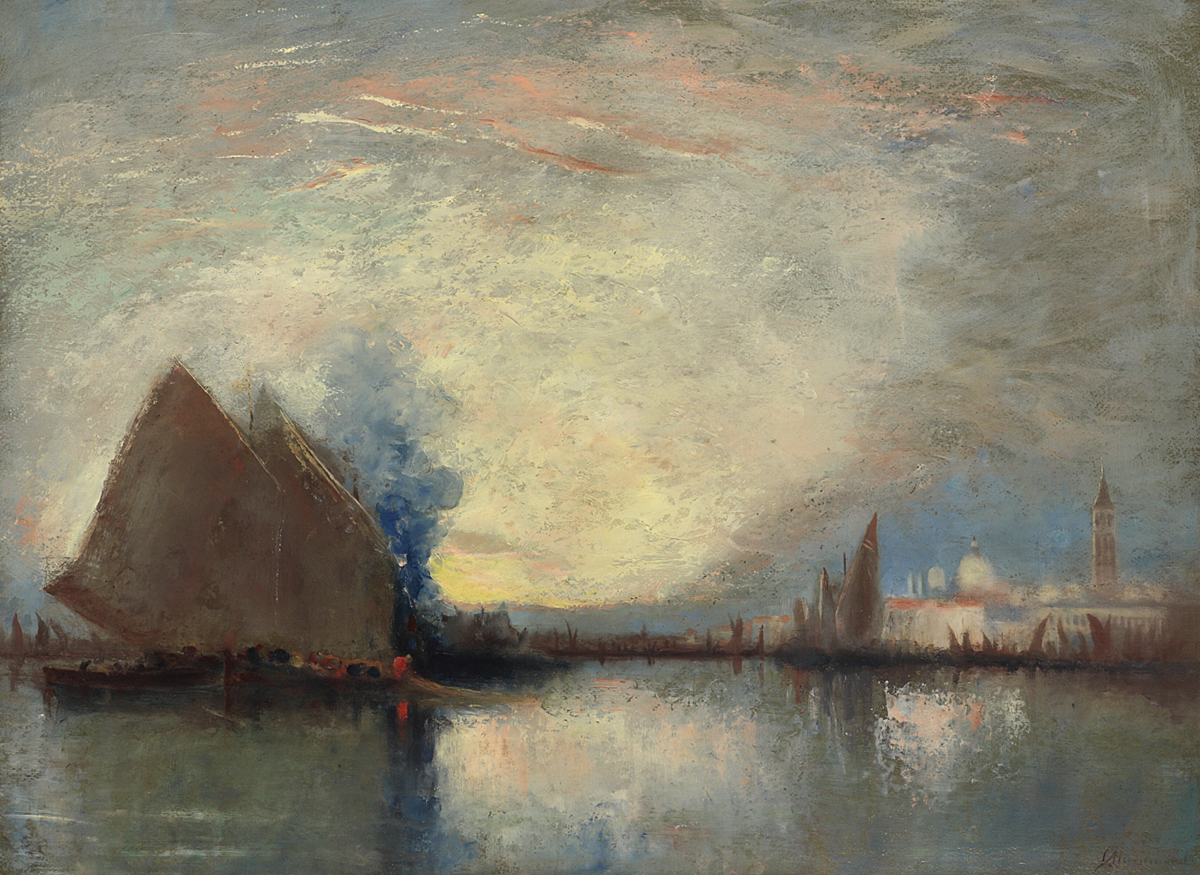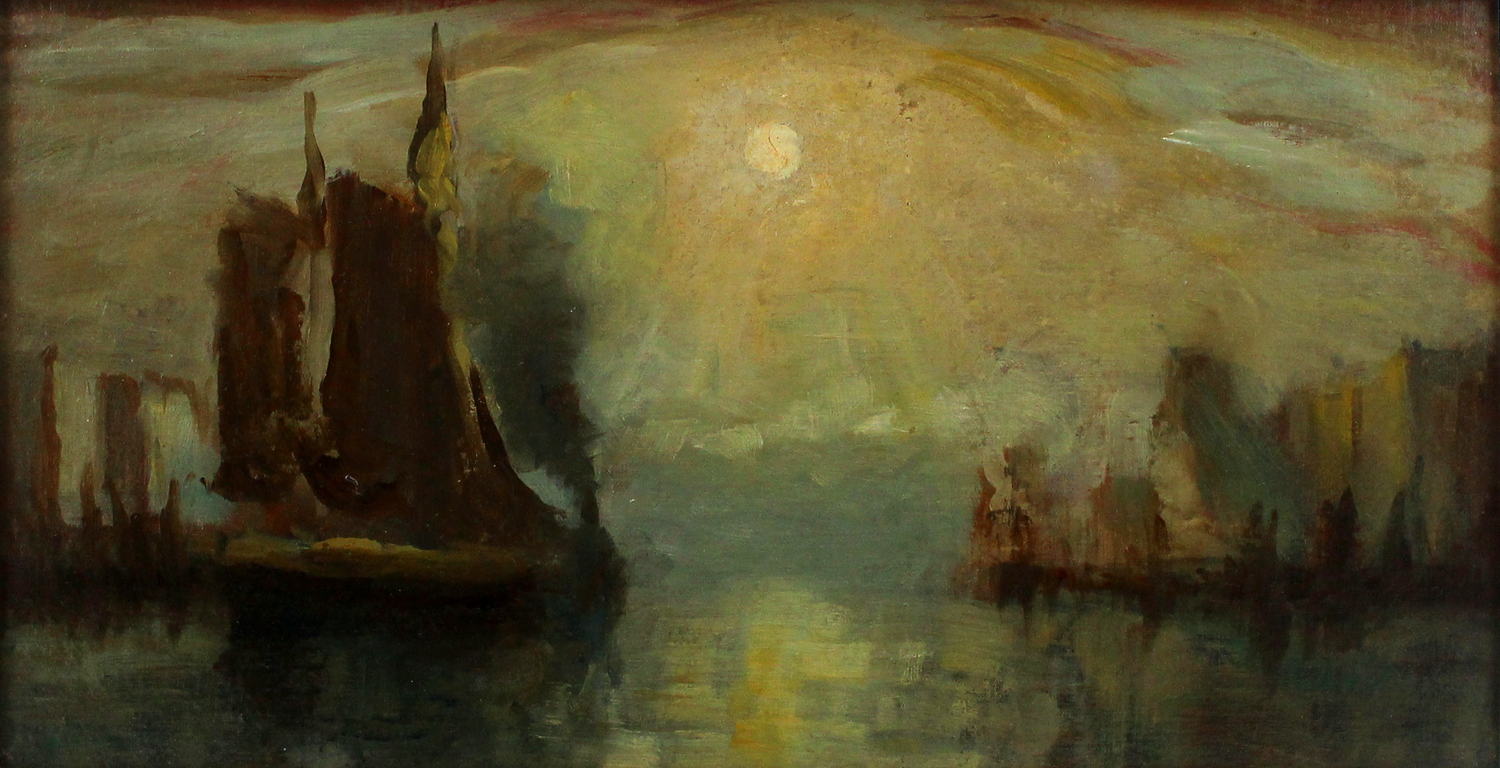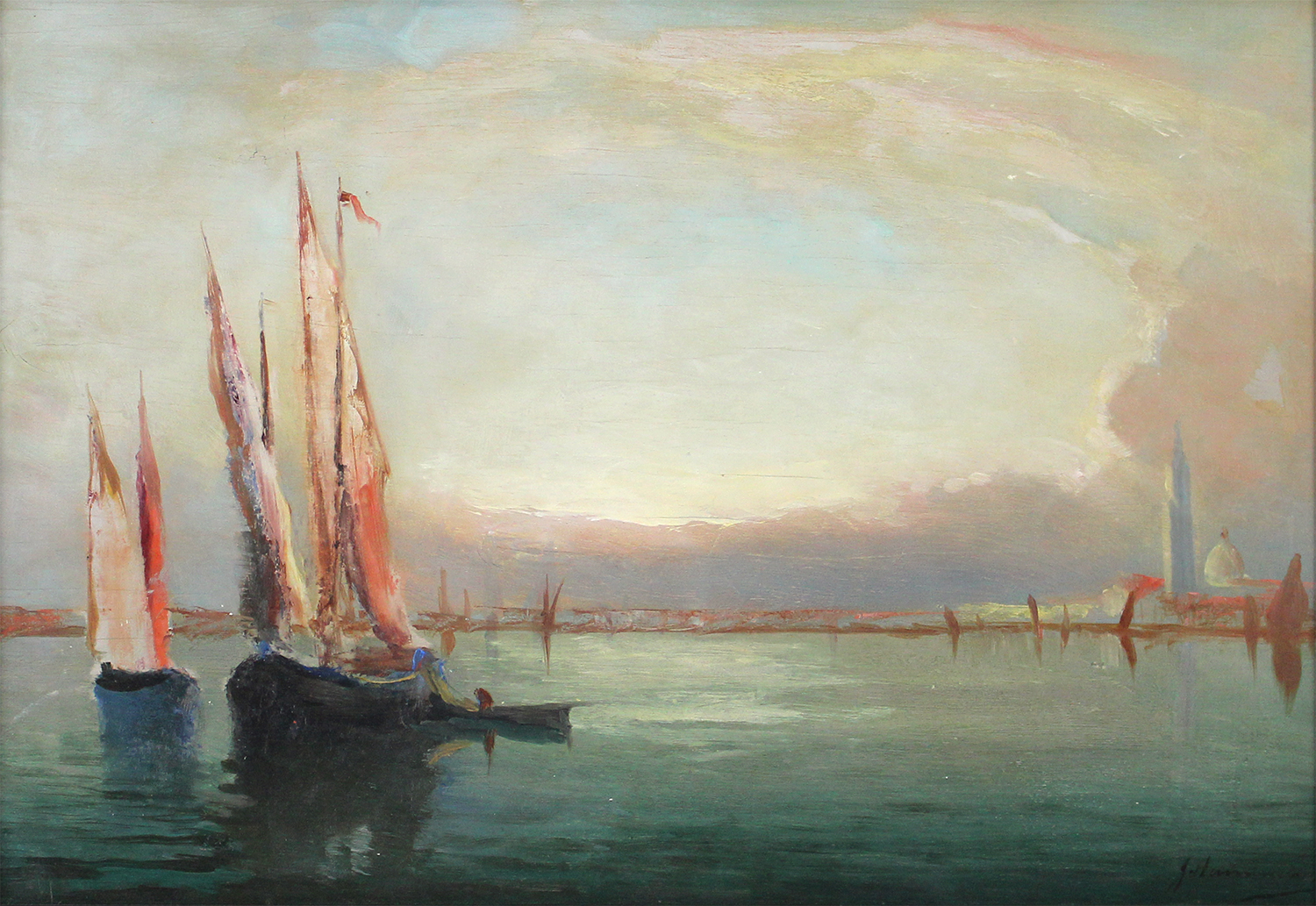SELECT SOLD
John A. Hammond is one of Canada’s earliest celebrated historical artists. A great admirer of the French Barbizon and Dutch Hague schools, he is best known for his landscapes and marine view depicting the Bay of Fundy. He was born in Montreal in 1843, at the young age of nine worked with his father as a marble cutter and at eleven decided to become an artist. In his twenties, he traveled with his brother to London, England, and then sailed to New Zealand where they spent two and a half years panning for gold. It is unclear whether Hammond did any drawing during this time, however, he did so on his return to Canada in 1870. In 1871 he joined the Transcontinental Survey party who were making preliminary studies for the building of a railway.
Hammond was employed by William Notman Photographers in Montreal, and it was there he worked with artists J.A. Fraser, Henry Sandham, Otto Jacobi, and W.P. Weston. At the age of twenty-eight he was working hard toward becoming a full time painter, which he achieved in 1873 when he was elected as a member of the newly formed Ontario Society of Artists.
Hammond moved to Saint John, New Brunswick where he painted portraits in 1880. He was listed in the Saint John Directory as an artist from 1880 to 1882, and as an artist with Wm. & J. Notman from 1882 to 1884. He became the principal of the Owens Art Institution, which was moved to Mount Allison Ladies College in Sackville in 1893, where he lived for the rest of his life.
In 1885 Hammond sailed to Europe and painted with James McNeill Whistler in Dordrecht, Holland, from whom he learned much about the fine points of etching. In France he painted Francois Millet at Barbizon, and later traveled to Italy where he produced a large number of drawings and lithographs. He exhibited at the Paris Salon, winning two awards in 1886.
Sir William Van Horne, president of the Canadian Pacific Railway, was a great admirer of Hammond’s work and commissioned him to create murals for the railway’s hotels and offices across Canada. In 1900-1901 Hammond travelled to china and Japan to promote the Canadian Pacific steamship line.
Hammond exhibited at the National Gallery in New York in 1887, and at the Pan-American Exhibition in 1901. He was elected Associate of the Royal Canadian Academy in 1890, and then as a full member in 1893. He exhibited regularly at the Royal Canadian Academy between 1891 and 1935. In 1920, he had a solo exhibition at the Jenkins Gallery, of which The Toronto Star Weekly noted, “There are pictures of Holland in winter, of coast farms, and tree bordered roads, but one feels that Mr. Hammond is essentially a painter of the sea and of the harbour, with its shipping, and that his greatest success are his atmospheric effects, when he fixes on canvas the prismatic beauty that comes from the sunlight struggling through the fog.”
Examples of the artist’s work can be found in institutions and private collections worldwide including the Vancouver Art Gallery, the National Gallery of Canada, the Musée National des Beaux-arts du Québec and at the McCord Museum.








